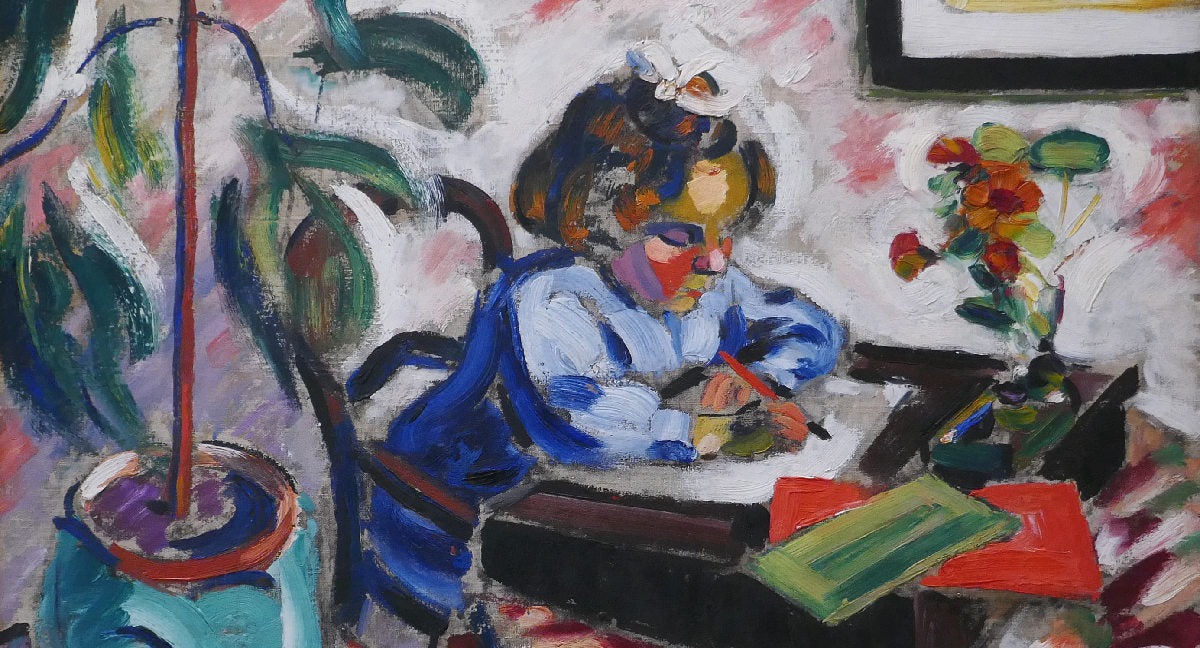Table of Contents:[hide]
1.Henri Le Fauconnier: Mastering the Cubist Canvas
Henri Le Fauconnier, a luminary in the Cubism movement, left an indelible mark on the art world with his profound understanding of geometric abstraction and innovative use of form and color. As a pioneering cubist artist, Le Fauconnier's journey through the realms of cubism art and his creation of iconic cubist paintings stand as testaments to his artistic brilliance. Let's delve into the life and works of this influential figure, exploring his contributions to cubism landscape, cubism portraits, and his standing as a famous artist of cubism.
1.1 The Emergence of Cubism: Henri Le Fauconnier's Early Years
Henri Le Fauconnier's artistic odyssey commenced amidst the vibrant ambiance of early 20th-century Paris, a melting pot of artistic experimentation. Influenced by the innovative spirit of the time, Le Fauconnier found himself captivated by the burgeoning cubism movement. This revolutionary art form, characterized by fragmented shapes, distorted perspectives, and a departure from traditional artistic conventions, resonated deeply with Le Fauconnier's avant-garde sensibilities.
1.2 Exploring Cubism through Le Fauconnier's Eyes
Le Fauconnier's approach to cubism was distinctive. His works reflected a harmonious blend of structure and emotion, where geometric shapes intertwined with expressive brushstrokes, creating a visual symphony on canvas. His mastery over cubistic techniques allowed him to breathe life into his creations, be it his mesmerizing cubism landscapes or his introspective cubism portraits. Each stroke seemed to narrate a story, capturing the essence of the subject in a multifaceted, abstract manner.
1.3 Iconic Cubist Paintings: Le Fauconnier's Artistic Legacy
Among Le Fauconnier's most celebrated creations are his cubist paintings, revered for their complexity and depth. One cannot overlook his groundbreaking work, where he redefined the boundaries of artistic expression. His innovative use of color palettes and the juxtaposition of geometric shapes in his cubism landscapes not only challenged conventional artistic norms but also elevated the genre to new heights.
1.4 Henri Le Fauconnier: A Famous Artist of Cubism
Le Fauconnier's contributions to the cubism movement solidified his position as a famous artist of cubism. His unique vision and artistic prowess garnered admiration from peers and art enthusiasts alike. Through his creations, he explored the intricate relationship between form and abstraction, leaving an enduring impact on the art world.
2. Legacy and Influence: Henri Le Fauconnier's Enduring Impact
Henri Le Fauconnier's legacy extends far beyond his lifetime. His pioneering spirit continues to inspire contemporary artists, encouraging them to embrace innovation and venture into uncharted artistic territories. The evolution of cubism owes much to Le Fauconnier's daring experiments and unwavering dedication to his craft. As we reflect on his journey through the realms of cubism art, we find ourselves immersed in a world where creativity knows no bounds, all thanks to the profound influence of Henri Le Fauconnier.
3. Henri Le Fauconnier FAQ's
-
Who was Henri Le Fauconnier? Henri Le Fauconnier was a prominent French artist renowned for his contributions to the Cubism movement during the early 20th century. He was celebrated for his innovative approach to art and his pioneering use of geometric abstraction.
-
What is Cubism? Cubism is an avant-garde art movement that emerged in the early 20th century, characterized by the use of geometric shapes, distorted perspectives, and a departure from traditional artistic techniques. Henri Le Fauconnier played a significant role in shaping the Cubist movement.
-
When and where was Henri Le Fauconnier born? Henri Le Fauconnier was born on July 5, 1881, in Hesdin, France.
-
What were Henri Le Fauconnier's major artistic influences? Le Fauconnier was influenced by various art movements, including Impressionism and Fauvism. However, his most significant influence was Cubism, which he embraced and further developed in his artistic endeavors.
-
What are some notable works by Henri Le Fauconnier? Some of Henri Le Fauconnier's notable works include "Abundance," "The Huntsman," and "The Mountaineers." These artworks showcase his mastery of Cubist techniques and his ability to blend abstraction with emotion.
-
How did Henri Le Fauconnier contribute to Cubism? Le Fauconnier contributed to Cubism by exploring innovative ways to represent form and space. His unique approach to geometric abstraction and his use of color distinguished his works and made him a central figure in the Cubist movement.
-
Did Henri Le Fauconnier experiment with different art forms? Yes, apart from painting, Le Fauconnier also delved into sculpture, experimenting with three-dimensional forms. His sculptures, much like his paintings, reflected the Cubist style and further showcased his artistic versatility.
-
What impact did Henri Le Fauconnier have on the art world? Henri Le Fauconnier's impact on the art world was profound. He pushed the boundaries of artistic expression, inspiring future generations of artists to explore new dimensions of creativity. His legacy as a Cubist pioneer continues to influence contemporary art.
-
Where can I view Henri Le Fauconnier's artworks today? Henri Le Fauconnier's artworks can be found in renowned museums and galleries around the world, including the Museum of Modern Art in New York and the Centre Pompidou in Paris. These institutions often feature his Cubist masterpieces, allowing art enthusiasts to appreciate his genius.
-
What awards or recognitions did Henri Le Fauconnier receive during his lifetime? While specific awards might not be widely documented, Henri Le Fauconnier received recognition from his peers and critics for his significant contributions to the Cubist movement. His influence on the art world remains a testament to his enduring legacy.




